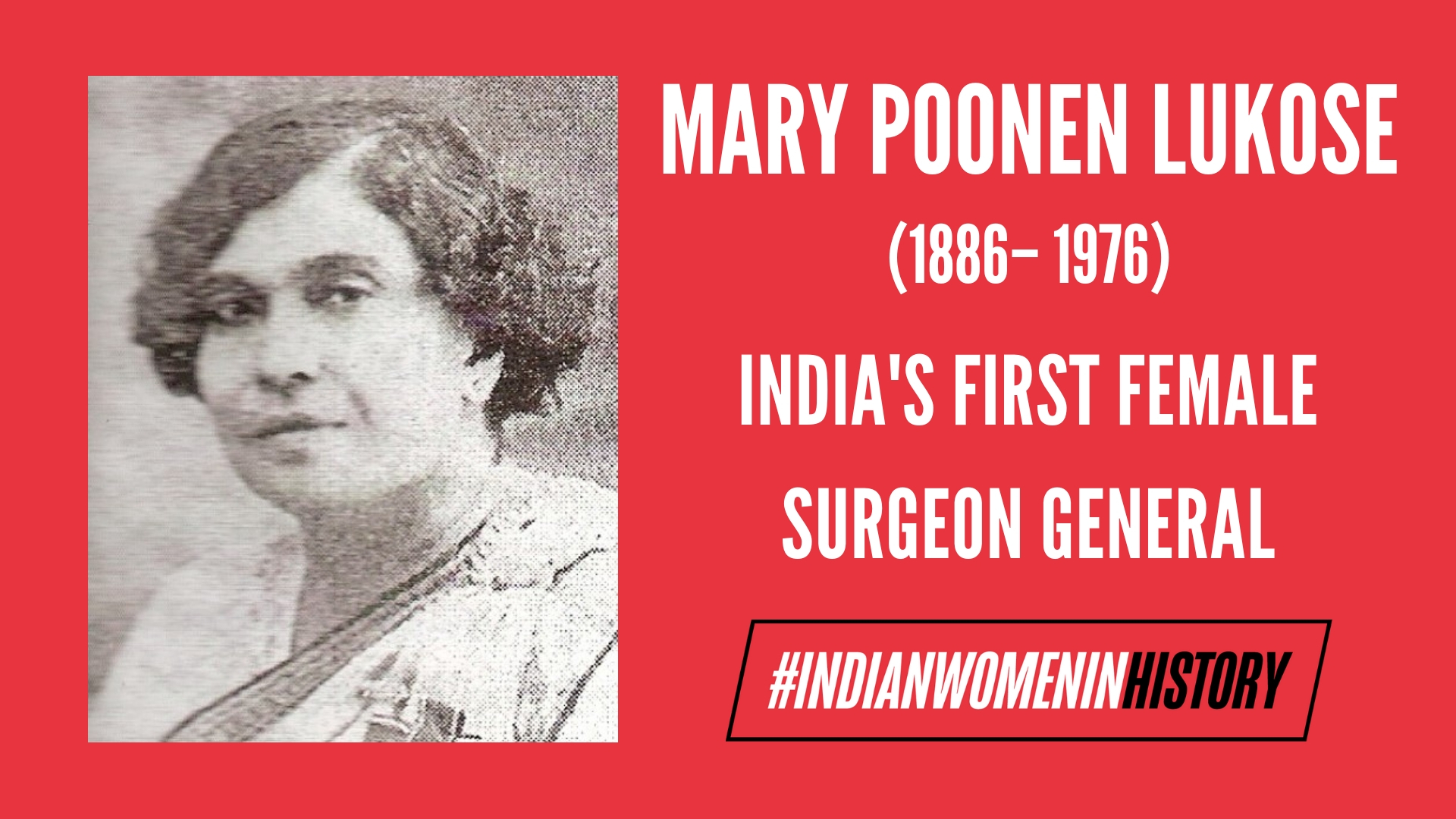Mary Poonen Lukose was a gynecologist and obstetrician. She is noted as the first female surgeon general in India. She was born on 2nd August, 1886 in Aymanam, Kottayam in erstwhile Travancore to Syrian-Christian parents. She is a pioneering figure where women’s entry into the medical profession is concerned and her story is one of many hurdles overcome and stereotypes broken. It is also a reflection of the socio-political landscape of this part of the subcontinent around this time.
Education
Mary was a trailblazer in the true sense of the word. She did not hesitate to stand out at a time when women’s education and involvement in public life found little favour. She was an extraordinary student and her faith in her ambitions is amply clear. However, pursuing them proved to be quite a struggle. She was denied admission to the science course at the Maharajas College as she was a woman and decided to do a degree in history instead. She was the only woman enrolled in her college and went on to become the first female graduate of the Madras University.
She had to move to the UK for since medical colleges in India at the time denied entry to women.
She hoped to pursue medicine like her father and had to move to the UK for the same since medical colleges in India at the time denied entry to women. Here, she became the first Indian student to receive her MBBS from the London University. She stayed on to complete her post-graduate studies at the Rotunda Hospital, London and the Great Ormond Street Hospital, London.
Career And Public Life
On her return to Travancore in 1916, she was appointed in charge of the Women and Children’s Hospital, Thaikadu. She married K. K. Lukose, a lawyer, in 1917. In 1924, she became the ‘Durbar Physician’, head of Travancore’s medical service and the first Indian woman to hold such a post. She was also politically active, having become the first woman legislator in Travancore in 1922. Her presiding over the health system saw her even more involved in political life as she was expected to represent her department in the legislature and answer policy related questions.
Also read: Justice Anna Chandy: The First Female High Court Judge Of India | #IndianWomenInHistory
She spearheaded significant public health initiatives in this period and made the most of a system that was allotted less than six percent of the state’s budget. Some of her notable interventions include a midwifery training program for children of midwives and the establishment of a tuberculosis sanatorium at Nagercoil and the X-Ray and Radium Institute in Trivandrum.
She spearheaded significant public health initiatives in this period and made the most of a system that was allotted less than six percent of the state’s budget.
She became the surgeon general in 1938 and is likely the first woman in the world to hold this post. She participated in public life in various other roles as well, serving as the founder president of the Trivandrum chapter of the YWCA, chief commissioner of Girl Guides, India, and a founder member of the Indian Medical Association.
A Look At Socio-Political Conditions
While Mary’s achievements are remarkable for a woman of her time, we must also appreciate the socio-political context that enabled them and examine her own position within the same. This is to highlight the structural nature of women’s oppression and how a progressive environment can help us better utilise our potential. While anxieties around increasing ‘westernisation’ were prevalent and it was still a common practice for Syrian-Christians to marry young, their association with European missionaries during this period worked in her favor.
It became a sign of respectability among them to adopt certain British practices and this in turn opened up new opportunities for the community. Women’s education and salaried employment began to be encouraged and their accomplishments publicly rewarded as something for the entire community to take pride in.
Moreover, her family’s elite status may have opened doors for her where women were usually at a disadvantage. Her father’s influence secured her admission at the Maharajas College even amid staunch opposition, making her the only female student in her college. That aside, Kerala’s matrilineal system had fostered an environment that was particularly conducive to women’s employment and self-actualisation (Mary herself did not belong to a matrilineal caste group, however). In fact, the fact that two Maharanis guided the Travancore government during her time could also have aided her career. Maharani Setu Lakshmi Bai appointed her as the ‘Durbar Physician’ soon after she became the ‘Regent’.
Also read: Abala Bose: The Peerless Helpmate| #IndianWomenInHistory
Mary Poonen Lukose passed away in 1976 at the age of 90. She had received the Padma Shri in 1975. She figured prominently in Kerala finance minister T. M. Thomas Isaac’s budget speech, 2018, where he pointed out how initiatives such as vaccination programs launched by the first generation of medical professionals, which included Dr. Mary Poonen, laid the foundations of the state’s much appreciated public healthcare system. This is perhaps a welcome move in a new direction considering that women’s contributions have largely been obliterated from history.
References
1. Politics, Women and Well-Being: How Kerala became ‘a Model’ by
Robin Jeffrey
2. Hektoen International, a journal of medical humanities
3. The New Indian Express
4. Manorama Online
About the author(s)
Kalyani is a 3rd year student at National Law School of India University, Bangalore.




